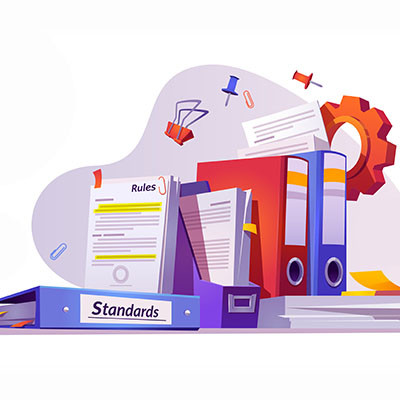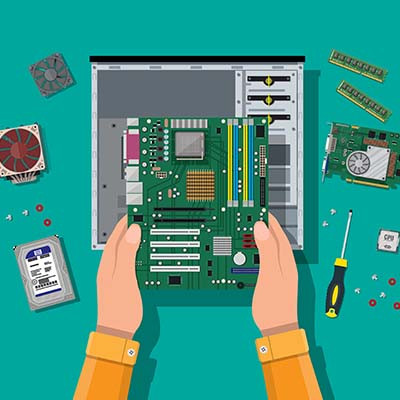Compliance is a critical element of many businesses’ requirements, with pretty severe penalties as a consequence if the prescribed standards are not met. Even more importantly, most compliance requirements and regulations are put in place for the welfare of not only the business, but its clientele as well. This makes it critical to know which apply to your business, and how to meet them fully.
Argentum IT LLC Blog
How does your business manage its IT? Do you have an in-house team, and how busy are they with all of the hustle and bustle of their everyday duties? Do they have time to address the many challenges and requests made of them? If not, then perhaps you should consider a different model for your IT management. Luckily, we have just the opportunity for you, and you won’t want to miss out on it.
Somehow, it’s December. Can you believe it?
2023 is practically upon us, and hopefully by now you’ve started to put some thought into how your business will maneuver through the next 12 months. It’s important to establish an IT plan and budget, so that your technology can actually be a value center as opposed to an expense.
Digital transformation is projected to make huge waves in the business environment, with an anticipated value of approximately $767 billion by the year 2026. It’s clear that businesses have lofty ambitions and expectations for their digital transformation initiatives, but there is a shadow that is cast on this number that holds many companies back: many of these initiatives fail, and fail hard. Why is this the case? We explore these reasons in this month’s newsletter.
Your business is your livelihood, so it only makes sense to invest in its protections so that your livelihood is secure. This will require a strategic approach. Let’s go over what your business needs to remain sufficiently secure, and what you should look for from each to get the best, most secure option.
Technology is one part of your business where you would rather take proactive measures than react to issues that pop up. After all, preventing some of the disasters and problems which surface could save you so much time and resources. Here are five of the best reasons why you should take a proactive approach to your business’ technology infrastructure.
Maintaining your business’ technology can be a lot to handle, particularly if you don’t have any IT staff members on hand to dedicate to its management. Managed services make this process a lot simpler, ensuring that (amongst other key benefits) your desktop solutions remain up-to-date and prepared for anything. Here are three basic tips to follow to ensure your desktops remain maintained.
It’s not often that something profoundly changes the landscape of business technology management as much as managed services has. When implemented correctly, managed IT services can completely replace the traditional methods of technology management within a company, and it all starts with changing not just your budgeting practices but also your maintenance practices.
Problems with your technology can often be spotted long before they become major time-consuming difficulties, but the catch with this statement is that you have to actively be looking for them in order to do so. If you want your business to remain profitable, you have to make sure that your technology is not wasting your business time or resources, and one way to do this is by actively monitoring your network for these issues.
How often do you find yourself in this situation? You are typing away on your computer pushing through your day-to-day tasks, scratching items off your to-do list, and communicating with your employees when suddenly, your computer freezes up. You’re then forced to perform a hard reset just to get your computer responsive again.
When you walk into most new businesses you’d be hard-pressed to think that IT has only been used in business for a few decades. Most businesses today use a variety of workstations (network endpoints) to handle scheduling, inventory, procurement, payroll, and a litany of other business functions. With that in mind, it stands to reason that keeping that IT working is the only way to efficiently run your business. We thought we’d take a look at how to keep your IT support costs low while keeping your technology managed properly.
When you browse the articles available on our blog, you might see the words “managed services” a lot. That’s because we firmly believe that managed services are the solution to a lot of problems that small and medium-sized businesses have with technology management, maintenance, and acquisition. How can managed services help your business push past its limits and establish itself as a powerhouse in the local market? Let’s take a look.
Businesses have always relied on technology in at least some capacity, whether it’s hosting an email server or platform or using a word processor for various tasks. Many companies, however, struggle with technology procurement, management, and maintenance for a variety of reasons. Let’s take a look at what some of these reasons are, as well as how managed services can relieve these pressures to create a better experience for your company as a whole.
When you invest in a new technology solution, you might be wearing your rose-tinted glasses and expecting too much from the solution right out of the box. We all have expectations for what we want the solution to accomplish, but sometimes these expectations simply are not realistic. Let’s take a look at some common misconceptions people have about technology in the workplace, especially in regards to implementation.
We throw the term “best practice” around a lot… enough that, without an appreciation for what the term actually means, it can start to sound like just another buzzword that the IT guy is using to sound more impressive. We assure you that this is not the case, and that the term “best practice” actually does mean something.
With businesses relying so much on technology to accomplish just about everything, IT undoubtedly has an important role to play. It makes sense that you would want your business’ IT to deliver as much value as possible. To accomplish this, we wanted to go over three IT-centric processes that are primed to help you do so.
Businesses often struggle with finding talent, and a variety of factors can contribute to this. Some are limited by their geographic location, although this has been made significantly less of a factor thanks to remote technology, whereas others might be limited by budget. Thankfully, outsourcing is a great way to shore up weaknesses in your organization’s operations, particularly for finding IT talent.
Whether you refer to them as clients or customers, the people who act as patrons to your business are essential to its success and survival. This means that you need to keep them as happy as possible. While there are many aspects of maintaining a high level of customer service, we wanted to take a bit of time to examine how deploying the right technology can assist your business in doing just that.




















